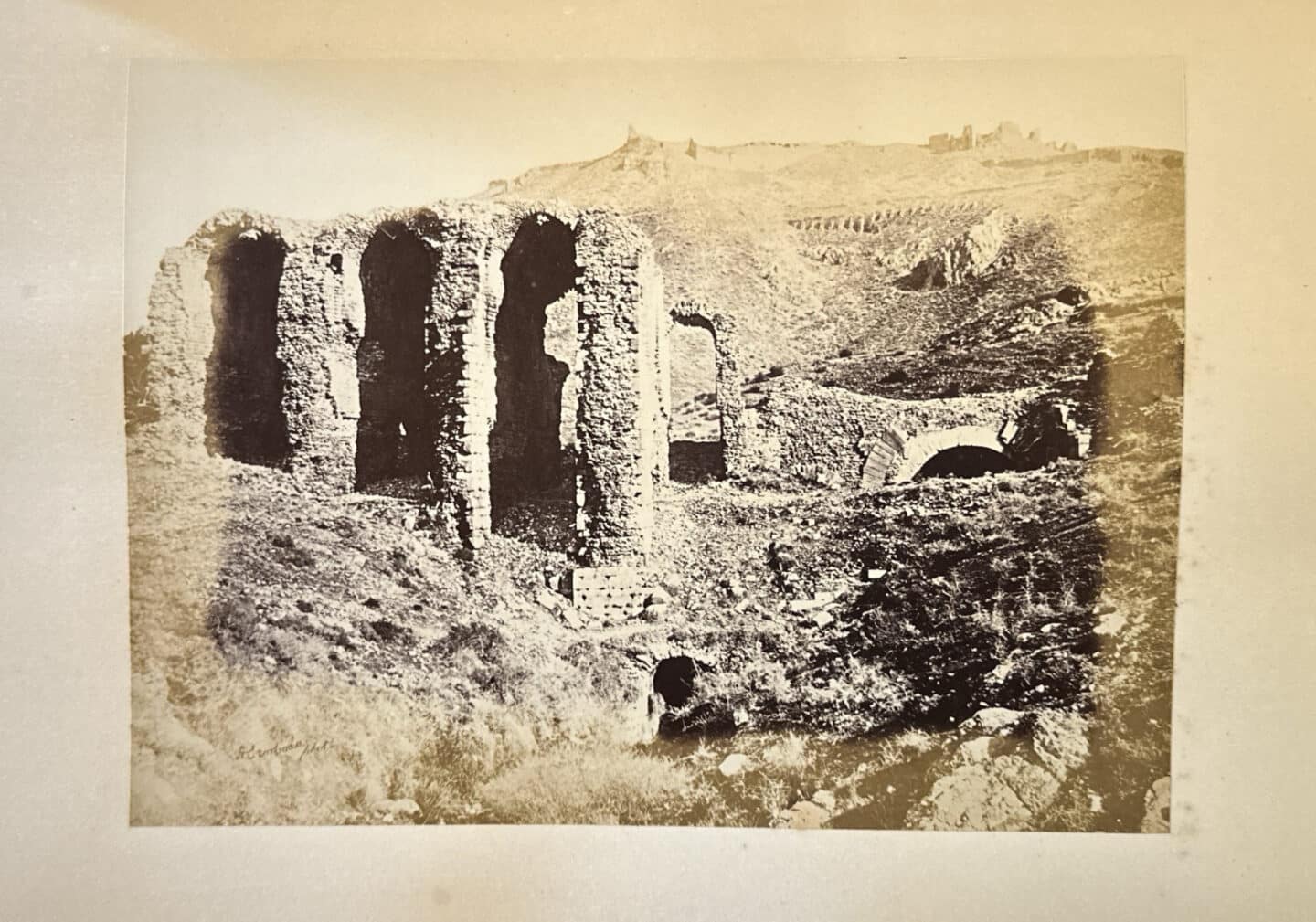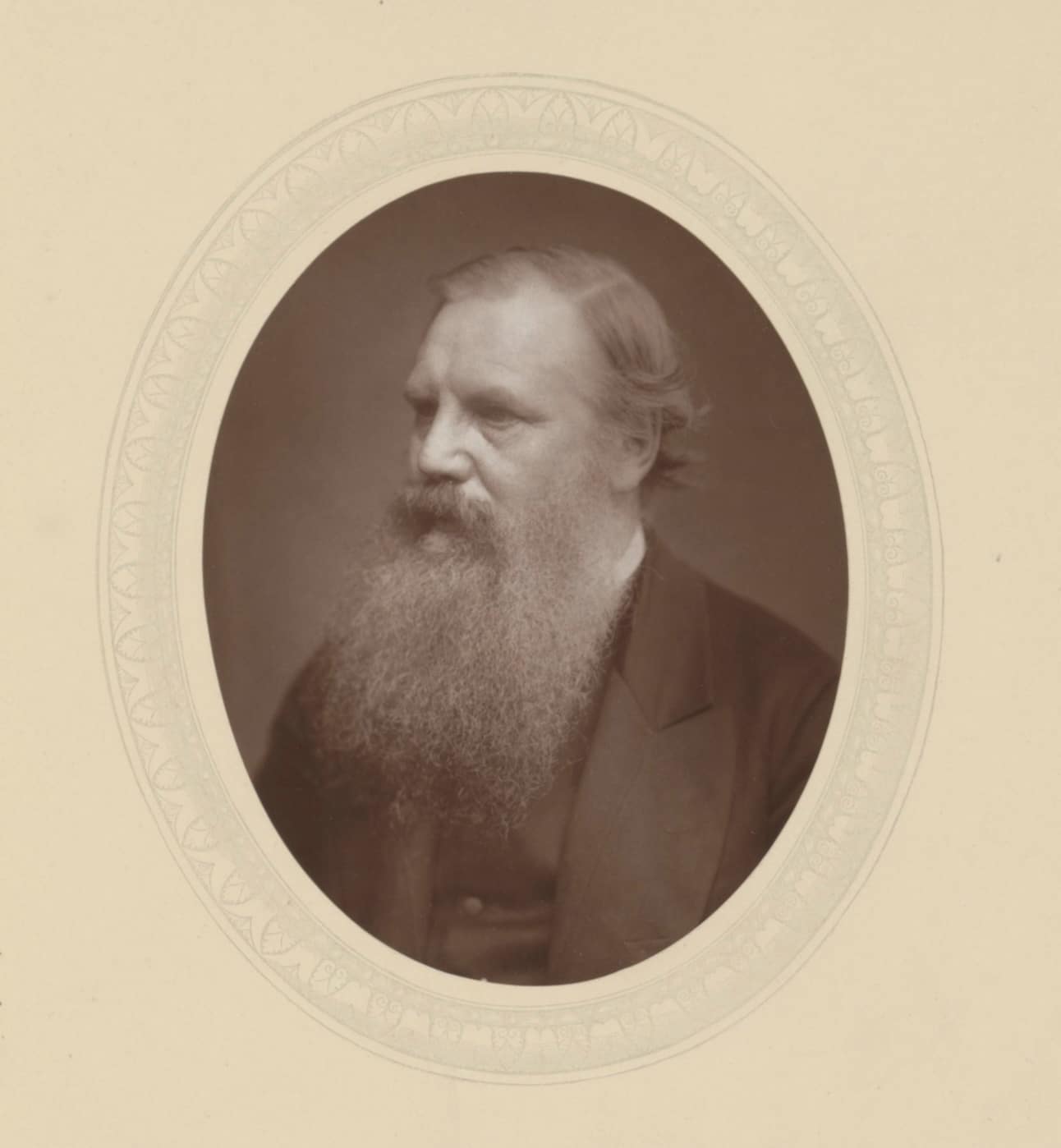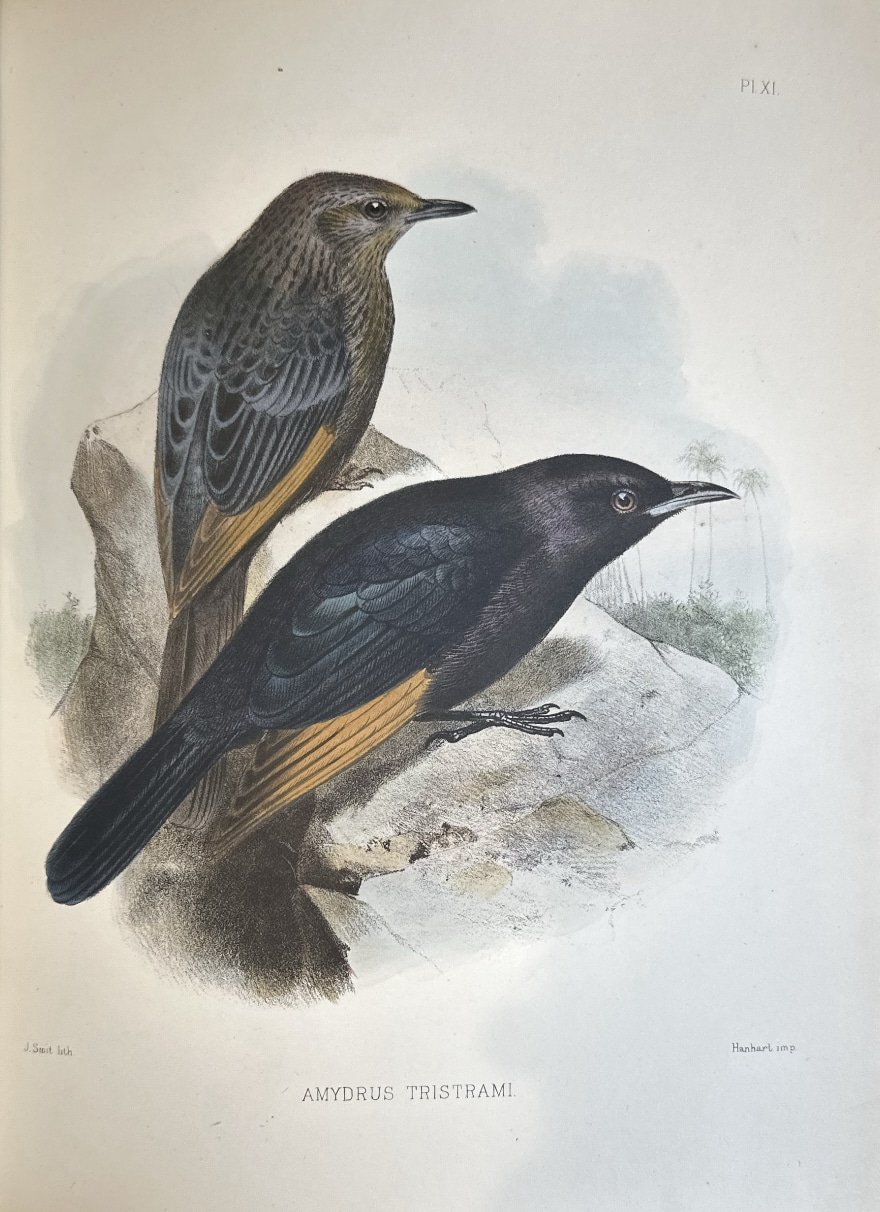Blog Post
Henry Baker Tristram: Cleric, Ornithologist, Travel Writer, and Lincoln Alumnus
I first came across the work of Henry Baker Tristram (1822-1906) in the autumn of 2020, soon after I arrived at Lincoln to begin my DPhil in the History of Art. I was researching the Hungarian-Armenian photographer Alexander Svoboda, who had been living and working in the Ottoman port city of Izmir (known then to British writers by its ancient name, Smyrna) during the 1850s and 1860s. Svoboda, who was born in Baghdad and lived in British India before moving to Izmir, subsequently emigrated to England in 1867. The following year, he published a luxurious, photographically-illustrated book entitled The Seven Churches of Asia with the London-based publisher, Sampson Low, Son, and Marston. The introduction to Svoboda’s book was written by someone called Reverend H. B. Tristram.
As I looked more into Svoboda, I discovered a series of seven articles on the Seven Churches of Asia published in the Victorian penny periodical, The Sunday at Home, also in 1869. ‘The Seven Churches of Asia’ refers to the seven ancient cities described in the Biblical Book of Revelation, all of which are located in southwestern Anatolia, in what was in the nineteenth century the Ottoman Empire and what is today modern Türkiye. The series of articles in The Sunday at Home were not written by Svoboda, but wood engravings based off his photographs were included in each article. Rather, these seven articles were written by the aforementioned Reverend Tristram.
Left: Photograph of the ancient city of Pergamos, by Alexander Svoboda; Right: A near facsimile reproduction of Svoboda’s photograph of Pergamos from Tristram’s 1869 Sunday at Home article on the same site
Evidently, Svoboda and Tristram had made some kind of deal – Tristram would write the introduction to Svoboda’s book in exchange for Svoboda providing photographs for Tristram’s articles. Tristram could also offer Svoboda something else: his credibility as a popular and prolific travel writer. By 1869, Tristram had already published a number of well-regarded books documenting his travels and natural historical observations in North Africa and the Middle East. His intersecting professional identities as a travel writer, on the one hand, and an Anglican cleric, on the other, intrigued me. Only as I started digging deeper into Tristram’s life and career did I learn that he was also an alumnus of Lincoln College.
Tristram matriculated at Lincoln in 1839, but he did not begin his studies in Classics until the following year. He had been born in the small Northumberland village of Eglingham in 1822, where his father was the local vicar. From a young age, Tristram exhibited an interest in the natural sciences and particularly in ornithology. This childhood interest would flower into a life-long passion for observing, documenting, and collecting birds, a passion that would lead him into some theological hot water when, in 1859, he became one of the first public supporters for the theory of evolution by natural selection recently put forth by Charles Darwin and Alfred Russel Wallace. Tristram publicly rescinded these views shortly thereafter in the aftermath of the infamous Huxley–Wilberforce debate that was held at the Oxford University Museum of Natural History in 1860. Later in his career, though, Tristram communicated with Darwin by letter, granting the latter permission to cite his ornithological research on Northern Africa in his 1871 publication The Descent of Man. His increasingly public support for Darwin did not prevent Tristram from being appointed canon of Durham Cathedral in 1873, a position he retained until the end of his life.
Left: Portrait of Henry Baker Tristram, c. 1878; Right: One of the birds that Tristram encountered during his travels to the vicinities of the Dead Sea. The bird is now known colloquially as Tristram’s starling or Tristram’s grackle.
What I found most interesting about Tristram was his willingness to incorporate Svoboda’s photographs into his work, and this indeed proved to be a wider trend within Tristram’s publishing career. Over the course of the second half of the nineteenth century, Tristram published at least 13 travel books, most of which were illustrated with novel artistic technologies that had emerged over the course of his lifetime, namely wood engraving, chromolithography, and photography. In addition to his support for Darwinism, Tristram’s embrace of these artistic technologies represent another progressive streak in an otherwise conservative ecclesiastical career.
Henry Baker Tristram was a man of his time. Closely engaged with the debates that were rocking the religious and scientific establishments in Victorian Britain, he was also an exemplar of the new brand of Anglican tourist who was able, thanks to developments in steam transportation, to travel to North Africa and the Middle East with the intention of visiting sites of significance from the Biblical Old and New Testaments. It is important to note that some of the observations and interpretations Tristram expressed in his writings about the regions that he visited reflect a Victorian imperialist viewpoint that we would find highly objectionable today. As such, the life and career of H. B. Tristram capture some of the central phenomena that define the Victorian era: religious conservatism, scientific breakthrough, British imperialism, the technological transformations of art, communication, and transportation. In Tristram, we find a character with a rich and complicated career, one whose work garners further study from art historians, historians of science, and historians of travel.
An exhibition curated by Alexandra Solovyev about Henry Baker Tristram is open to visit in the Garden Building from June 2025-October 2025.
Further reading:
Baker, R. A. ‘“The Great Gun of Durham”—Canon Henry Baker Tristram, F.R.S. (1822-1906). An Outline of His Life, Collections, and Contribution to Natural History’. Archives of Natural History 23, no. 3 (1996): 327–41.
Hale, W. G. Sacred Ibis: The Ornithology of Canon Henry Baker Tristram, DD, FRS. Durham: Sacristy Press, 2016.
Hannoosh, Michèle. ‘The Art of Wandering: Alexander Svoboda and Photography in the Nineteenth-Century Mediterranean’. In The Mobility of People and Things in the Early Modern Mediterranean: The Art of Travel, edited by Elisabeth A. Fraser, 131–51. New York: Routledge, 2019.
Svoboda, A. The Seven Churches of Asia. Introduction by Rev. H. B. Tristram, M.A. L.L.D. F.R.S. London: Sampson Low, Son, and Marston, 1869.
Tristram, LL.D., F.R.S., Rev. H. B. The Seven Golden Candlesticks. London: Religious Tract Society, 1871.






